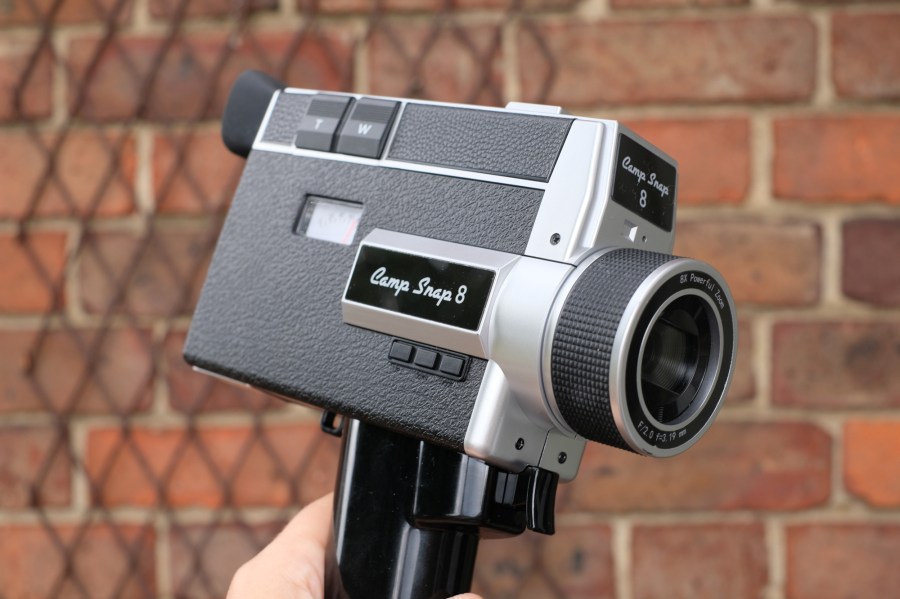Amateur Photographer verdict
It’s a bit silly and over-designed, but if you embrace the kitschy lo-fi charm of the Camp Snap CS-8, there’s fun to be had. It’s easy to use and pretty affordable, too.- Very easy to use
- Kitschy design is quite charming
- Comes with 4GB built-in storage
- Range of digital filter effects
- Digital zoom is very poor
- No stabilisation
- Bulkier and more ostentatious than necessary
With proper cameras getting more and more expensive and cost of living getting higher, a real market has emerged for budget cameras.
This helps explain why the original Camp Snap proved to be something of a modest hit. A simple point-and-shoot that lacks a screen, it captures stills that you can’t see until you download them onto the computer. It has proven to be a welcome antidote to the constant digital noise of modern life, with its ultra-cheap price tag only sweetening the deal.
Now, Camp Snap is hoping to repeat the trick, but this time for video. The C-S8 is another throwback – whereas the previous camera was modelled on disposable film cameras, this one recreates the look and feel of a classic Super 8mm movie camera. Once again, you can’t see your clips until you download them, and once again, it’s a camera that’s very much aimed at the fun and affordable end of image-making. If you want technical perfection, you’re in the wrong place.
So, it looks like kitschy looks and grainy footage are back on the menu, boys. Let’s see how the CS-8 stacks up.
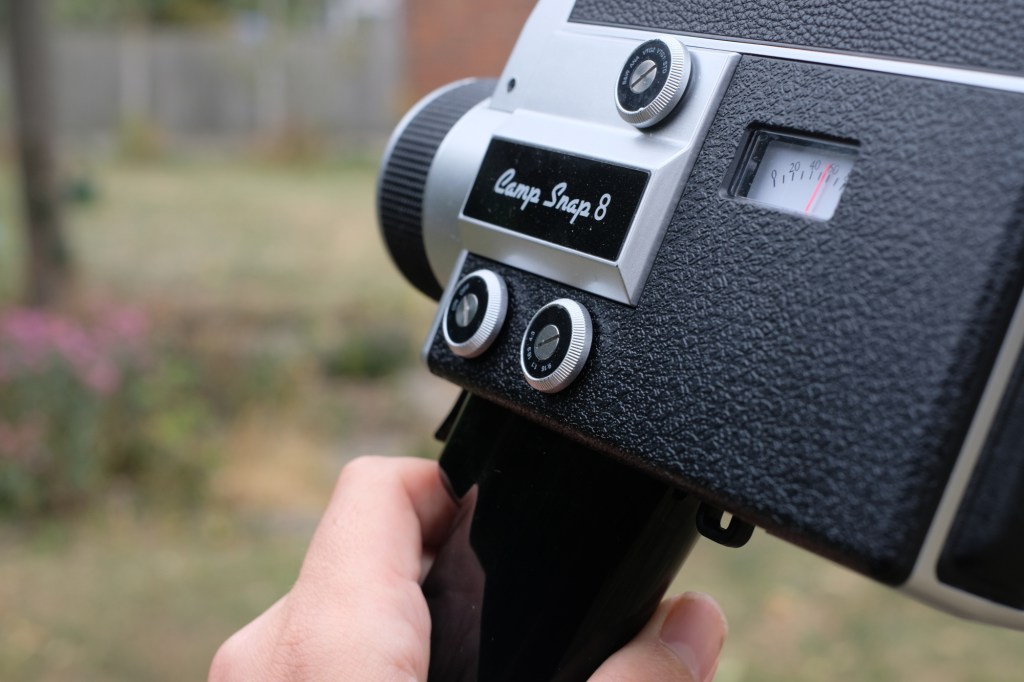
Camp Snap CS-8 Key Features
- 1/2.7-inch sensor
- Fixed focus 19mm equivalent f/2 lens
- Electronic viewfinder
- No screen / screen-free
- USB type-C
- Rechargeable battery (600mAh, non-removable)
- 8x digital zoom
- 4GB MicroSD card included (upgradeable to 128GB)
- 5 image filters
- $199 / £149, or $149 / £112 for pre-orders
Camp Snap CS-8: Build & Handling
The thing that will immediately strike you upon unboxing the CS-8 is, well, that this is a big ol’ hunk of plastic, isn’t it? With a rectangular body that’s approaching the size of a VHS tape and a chunky handle sticking out the bottom, the CS-8 is not the kind of camera you stick in a pocket. This makes sense in a way, given the old Super 8 cameras it’s modelled on, but on the other hand, it’s hard not to notice that this is much more bulk than such a tiny sensor really warrants.
It also means that the CS-8 is not a camera for those who like to blend in. Quite the reverse. I can tell you this from first-hand experience – if you walk the length of Edinburgh’s Royal Mile or a similarly busy street wielding this thing, you will get stares. You will get comments. You will get approached by people politely asking what on earth you’re holding.
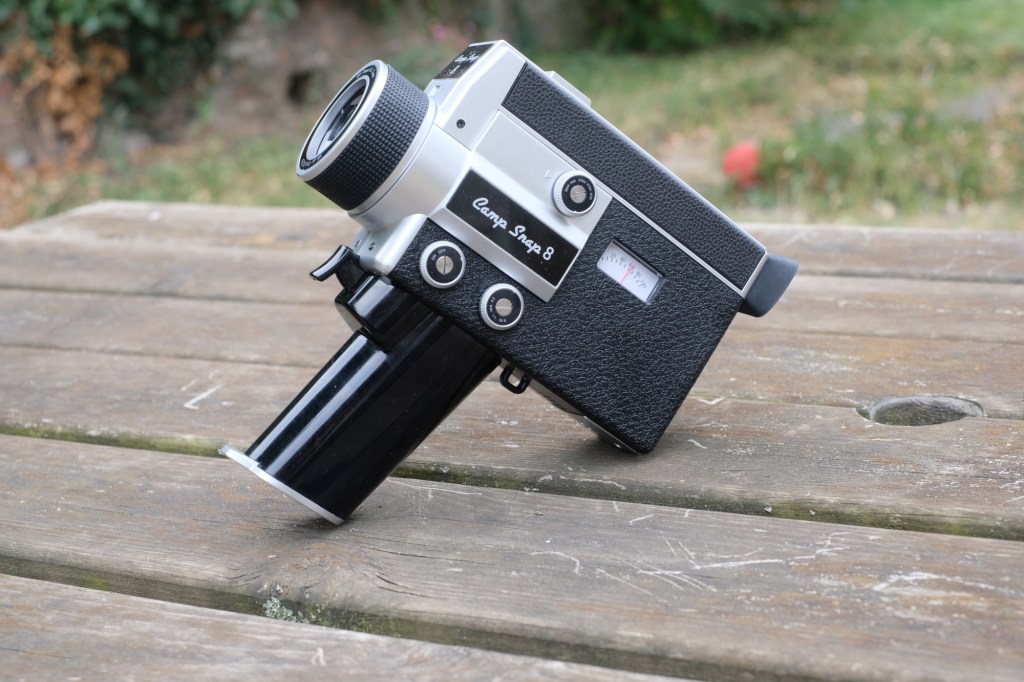
Handling is straightforward. You have dials on the side to change aspect ratios and digital filters. For the former, you have the choice of 4:3, 16:9 widescreen, 1:1 square, and 9:16 vertical for Reels and TikToks. For the latter, you get: Standard, Vintage 1 (soft colours), Vintage 2 (warmer), Analog (a scuzzier look with artificial grain, at 18fps rather than 30fps) and B&W (black and white).
Just like old Super 8 cameras, you have to hold down the trigger to record, meaning you’re realistically going to be creating quite short clips. I found this fine once I got used to it, though it makes misfires very easy, and means once you offload your footage, the first thing you’ll probably have to do is delete a load of one-second junk clips (there’s no delete function in the camera itself).
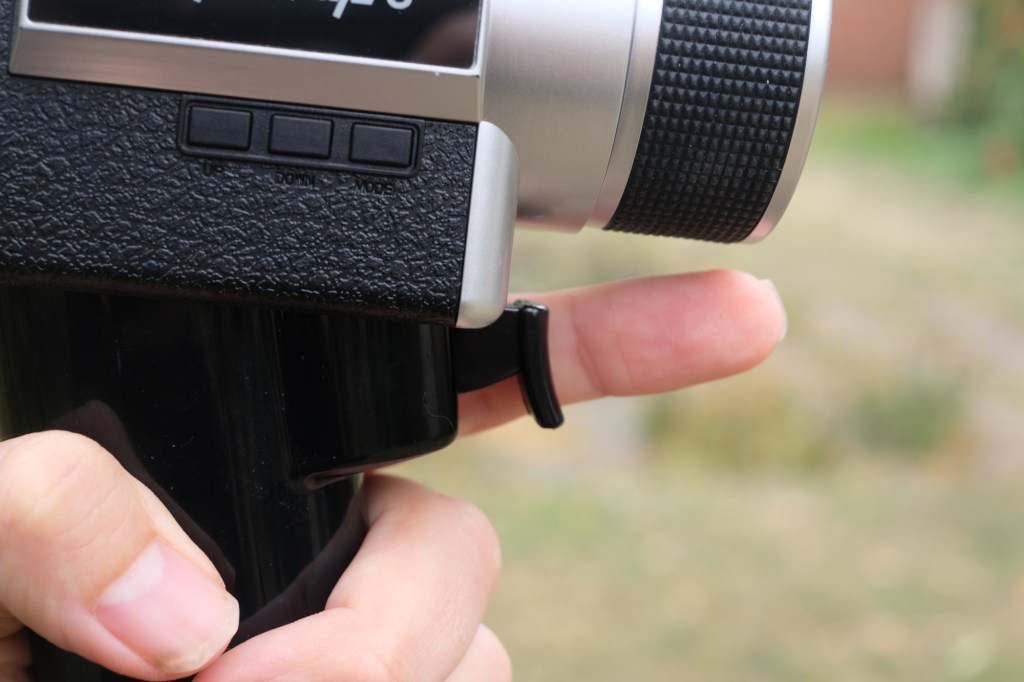
The CS-8 also has a digital zoom, activated via buttons on the right-hand side – a placement I found irritating, given that I was using my right hand to hold down the trigger. To zoom while using the viewfinder, I had to reach over with my left hand and fumble for the buttons. Lefties will be happy, at least.
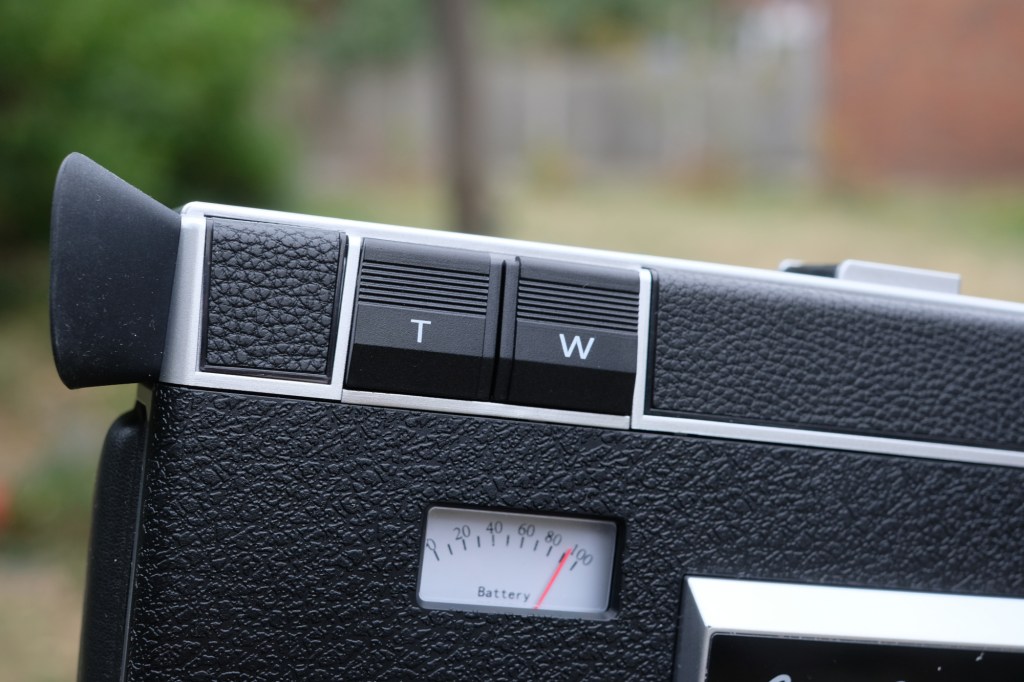
Just like the Camp Snap photography camera, there is no LCD screen, meaning you won’t be able to see your footage until you download it onto your computer. Composition is via a decent-enough electronic viewfinder. Also, in a touch that is silly but I nonetheless appreciated, battery and storage levels are indicated via analogue dials on the sides of the camera. Cute.
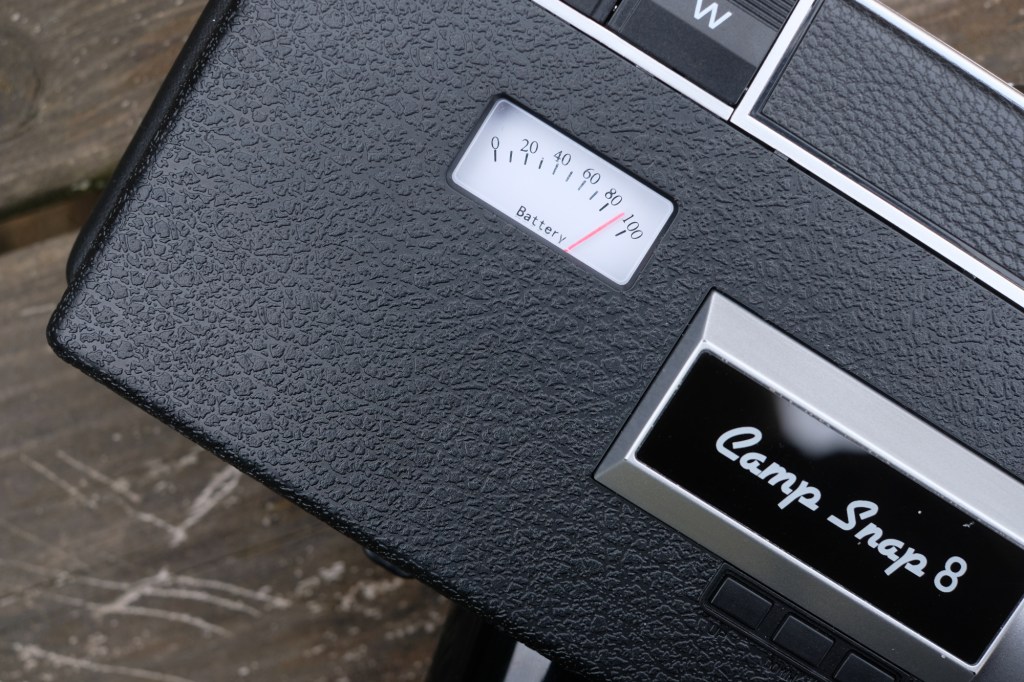
Camp Snap CS-8: Performance & Video Quality
Let’s be real – this is not a camera you’re going to use for serious video projects. It’s a camera for parties, it’s a camera for fun. It’s a camera for taking on a trip with your friends, passing between each other to mess about with, then cutting together a silly video of your holiday once you get home. So, that’s what I did:
Everyone found the camera extremely funny to look at, and we had a lot of fun playing with it. The lack of the screen meant we were never crowding around to peer at what we’d just shot. It was simple enough that everyone could use it, and the battery comfortably lasted us a week.
On reviewing our footage, there were certainly things I didn’t care for. There’s no stabilisation to speak of, so a lot of your footage is going to be wobbly. The digital zoom is also pretty horrible, making your images unpleasantly soupy and indistinct, and details quickly becoming muddy in a way that entirely defeats the purpose of zooming in on them. Zooming in also compounds the aforementioned wobble problem, and overall it’s best avoided. Maybe that’s why they put the buttons on the wrong side. The mic, meanwhile, is fine for anyone standing within a few metres of the camera, but anyone further away sounds like they’re transmitting from a submarine.
For our holiday video, I kept the settings the same for consistency – VTG1 filter and 4:3 aspect ratio. The footage has a pleasant colouring, though details are often muddy, particularly when the camera moves. Part of me wished I’d used the ANA filter for 18fps and really leaned into the retro vibe; 30fps has an inescapably YouTube look to it. But then I would have had to deal with the ostentatious digital artefacts designed to simulate film grain.
Below, you can see a quick comparison of the different filter and aspect ratio settings:
Camp Snap CS-8: Value for Money
I thought the original Camp Snap camera was priced really well at around $65 / £68. A perfect little impulse purchase, just the right pitch for a camera that’s a bit of fun. Whereas at an RRP of $199 / £149, or $149 / £112 for pre-orders, the CS-8 is a bit more of an ask. It’s still certainly cheap by camera standards, but I think it’ll attract fewer impulse buyers.
I certainly would have taken a cheaper version of this camera that shot the same footage but wasn’t quite so obsessed with looking and acting like a Super 8 – a camera that I have zero nostalgia for. This is anecdotal, but everyone my age grew up using the kinds of disposables that the original Camp Snap was aping. Comparatively few ever laid hands on a Super 8. You do wonder who this is really for.
Camp Snap CS-8: Verdict
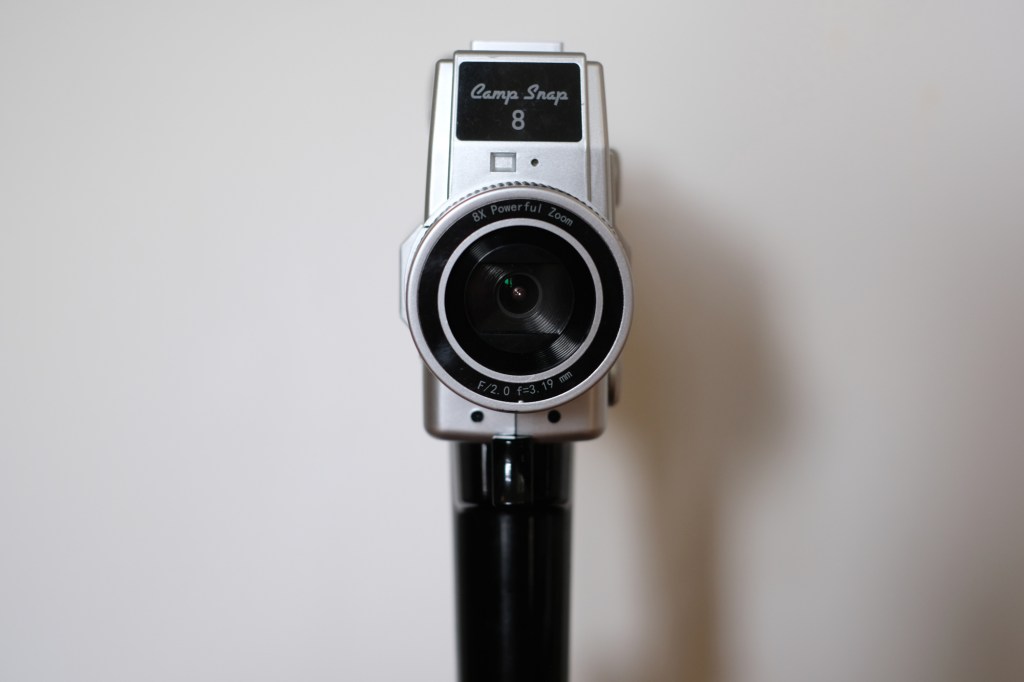
And yet, despite everything, I find myself charmed. The Camp Snap CS-8 is a big, silly camera that has gone a little overboard on the retro kitsch, but it also undoubtedly delivers a fun time making pictures. Just like the previous Camp Snap, it prevents you from worrying about the technical details of your images, or the quality of what you’ve shot before, and keeps you in the moment. You point, you shoot. Everything else is a problem for later.
My friends and I enjoyed our time with the CS-8, and I would consider taking it on our next trip, too. The footage we produced, as you’ve seen, was not particularly cinematic, but that’s very much not the point. There are some aspects that I think are too compromised, most notably the digital zoom, but overall the CS-8 hits the mark it’s aiming for.
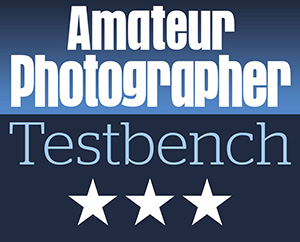
For more options, check out our guides to the best cameras for vlogging and the best cameras under $200.

